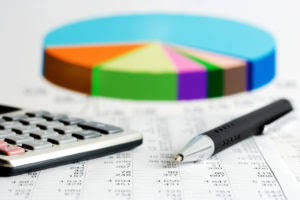Salvage Value Calculator

Specialized equipment, patents, and intellectual property developed by the https://www.bookstime.com/ startup may have limited applicability beyond its niche market. Additionally, the nature of the high-tech product may render it obsolete, making it difficult to find potential buyers for the assets. A detailed review of the company’s financials reveals its current precarious position. The startup has been depleting its cash reserves rapidly to finance research and development, marketing campaigns, and operational expenses.
How to Calculate Residual Value

7 Investors should carefully consider the investment objectives, risks, charges and expenses of the Yieldstreet Alternative Income Fund before investing. Investments in the Fund are not bank deposits (and thus not insured by the FDIC or by any other calculating salvage value federal governmental agency) and are not guaranteed by Yieldstreet or any other party. Yieldstreet provides access to alternative investments previously reserved only for institutions and the ultra-wealthy. Our mission is to help millions of people generate $3 billion of income outside the traditional public markets by 2025.
Going Beyond the Stock Market: Private Credit vs Private Equity

In order words, the salvage value is the remaining value of a fixed asset at the end of its useful life. The salvage value is considered the resale price of an asset at the end of its useful life. 5 Represents the sum of the interest accrued in the statement period plus the interest paid in the statement period. Explore beyond stocks and bonds to achieve potentially higher returns and diversification with the Yieldstreet Alternative Income Fund. Since technology is not going anywhere and does more good than harm, adapting is the best course of action.
Why Calculate After-Tax Salvage Value?
A depreciation schedule helps you with mapping out monthly or yearly depreciation. In such cases, the insurance company decides if they should write off a damaged car considering it a complete loss, or furnishing an amount required for repairing the damaged parts. So, in such a case, the insurance company finally decides to pay for the salvage value of the vehicle rather than fixing it.
Example of salvage value calculation for a car belonging to a business for after and before tax
By submitting this form, you consent to receive email from Wall Street Prep and agree to our terms of use and privacy policy. We’ll assume the useful life of the car is ten years, at which the car is practically worthless by then, i.e. for the sake of simplicity, we’ll assume the scrap value is zero by the end of its useful life.
- An asset in good condition is likely to have a higher salvage value compared to one that is damaged or in poor condition.
- Companies take into consideration the matching principle when making assumptions for asset depreciation and salvage value.
- Upon closer examination, it becomes evident that the startup operates in a fiercely competitive industry characterized by rapid technological advancements.
- Suppose a company spent $1 million purchasing machinery and tools, which are expected to be useful for five years and then be sold for $200k.
- As new and more efficient technologies emerge, older assets may become outdated and less desirable in the market.
- This information is helpful to management to know how much cash flow it may receive if it were to sell the desk at the end of its useful life.
Next, the annual depreciation can be calculated by subtracting the residual value from the PP&E purchase price and dividing that amount by the useful life assumption. Depreciation schedules provide a detailed record of how assets depreciate over time, ensuring accurate financial reporting and compliance with accounting standards. The original price or initial cost of an asset includes its purchase price, installation costs, and any other expenses incurred to bring the asset to a usable state. For example, if an asset has a cost of $10,000 and a useful life of 5 years, the straight-line rate would be $2,000 per year. However, with the double-declining balance method, the rate is doubled to $4,000 per year. The double-declining balance method is a depreciation technique used to calculate the reduction in value of an asset over its useful life.
- However, numerous well-established firms are also developing similar products and possess superior financial resources, brand recognition, and market presence.
- Say your carnival business owns an industrial cotton candy machine that costs you $1,000 new.
- The residual value of a car is the estimated value of the car at the end of the lease.
- It includes equal depreciation expenses each year throughout the entire useful life until the entire asset is depreciated to its salvage value.
- The depreciation journal entry accounts are the same every time — a debit to depreciation expense and a credit to accumulated depreciation.
This difference in https://www.facebook.com/BooksTimeInc/ value at the beginning versus the end of an asset’s life is called “salvage value.” When a company purchases an asset, first, it calculates the salvage value of the asset. After that, this value is deducted from the total cost of the assets, and then the depreciation is charged on the remaining amount. The depreciation journal entry accounts are the same every time — a debit to depreciation expense and a credit to accumulated depreciation. The balance sheet shows the net book value of an asset, which is the original cost minus accumulated depreciation, helping stakeholders understand the asset’s current worth.

Straight-Line Method
Residual value is used to determine the monthly payment amount for a lease and the price the person holding the lease would have to pay to purchase the car at the end of the lease. Residual value formulas differ across industries, but its general meaning—what remains—is constant. In capital budgeting projects, residual values reflect how much you can sell an asset for after the firm has finished using it or once the asset-generated cash flows can no longer be accurately predicted. For investments, the residual value is calculated as the difference between profits and the cost of capital. Incorporating a robust ERP system like Deskera can significantly enhance how businesses manage and calculate salvage value.
